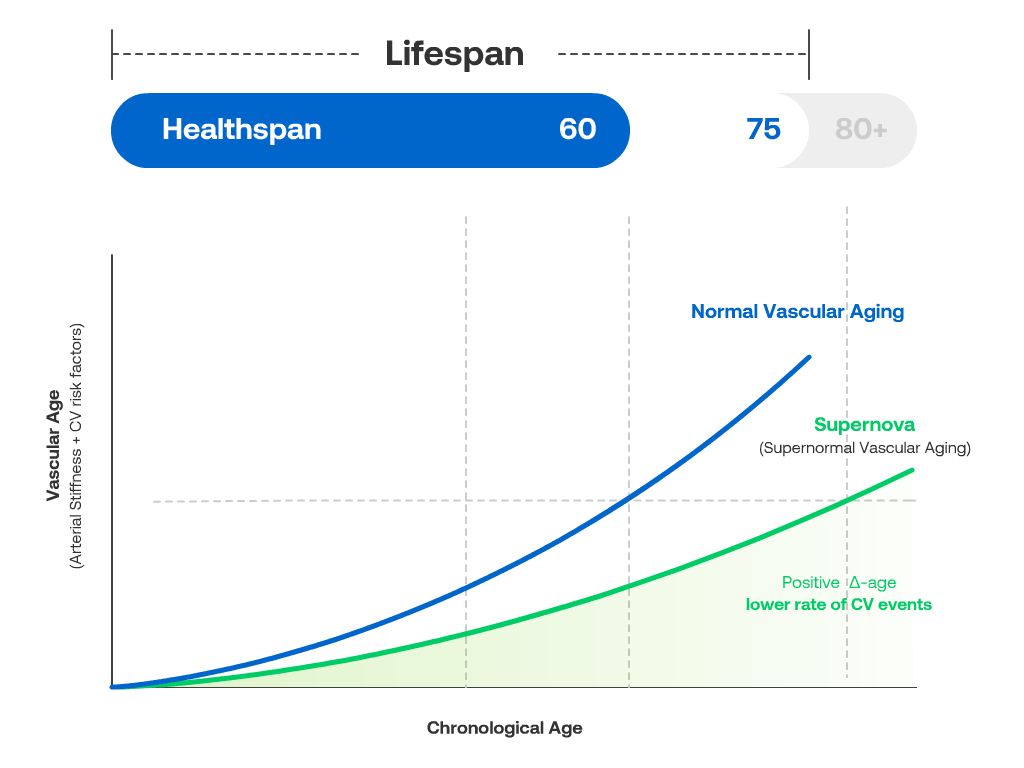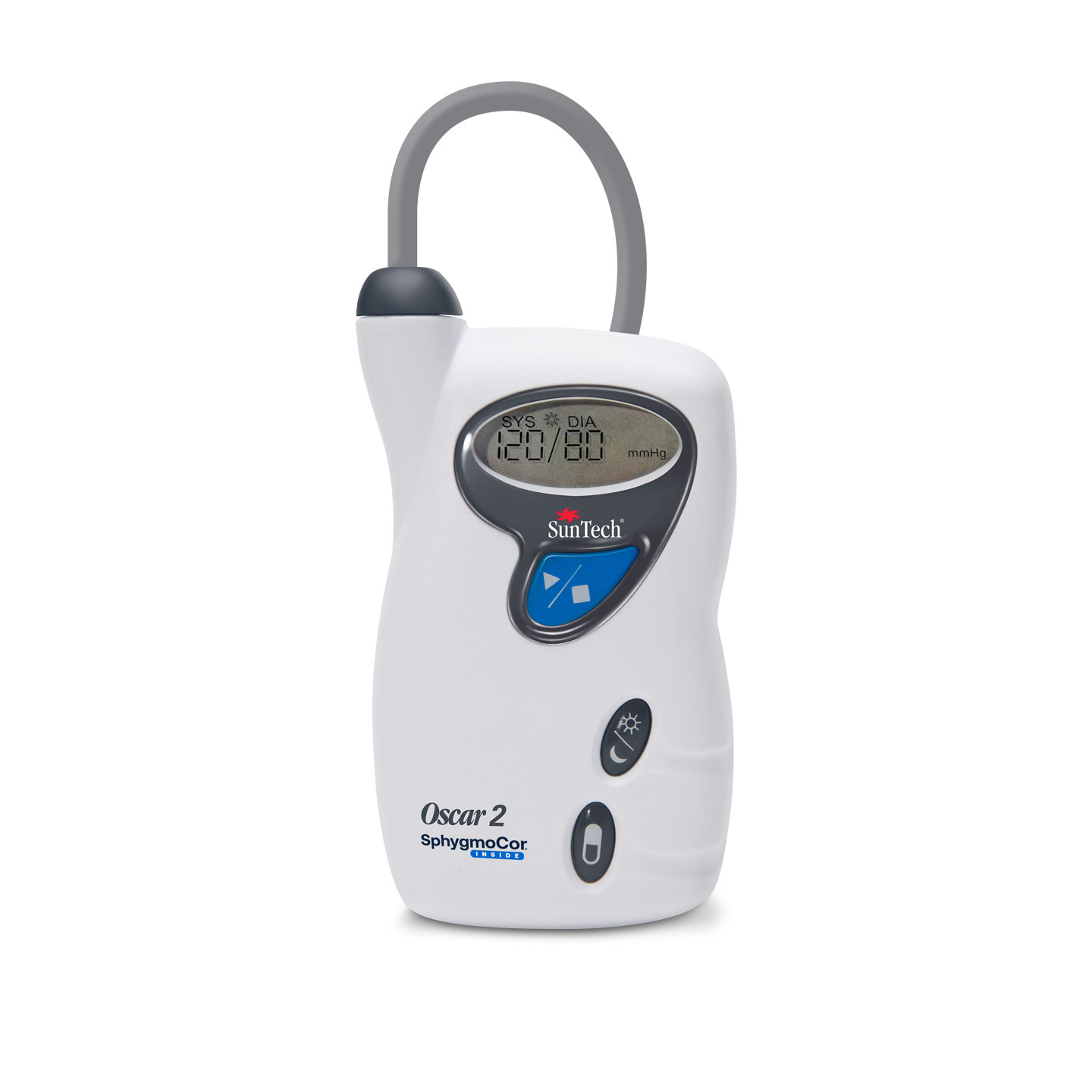Vascular Biomarkers and the Detection of Early Vascular Aging
90%
By the age of 55, approximately 90% of individuals exhibit some degree of arterial stiffening, a key marker of vascular aging.
Early Vascular Aging Elevates the Risk of Cardiovascular Events


Evaluate Arterial Stiffness to Reveal Vascular Aging
The assessment of arterial stiffness through vascular biomarkers including Central Blood Pressure (CBP), Augmentation Index (AIx), Pulse Wave Velocity (PWV) provides critical insights into the vascular aging process.
These biomarkers enable the early detection of EVA, allowing for timely interventions that can slow the progression of vascular aging, improve cardiovascular outcomes, and enhance the overall quality of life.
Through targeted lifestyle modifications and pharmacological treatments aimed at reducing arterial stiffness, healthcare professionals can effectively combat the detrimental effects of EVA and extend healthspan in affected individuals.
Vascular Biomarkers Explained
Clinical Utilities of Arterial Stiffness Assessments Beyond EVA
Identifying Subclinical Changes
Arterial stiffness assessments can detect subclinical vascular changes before clinical symptoms appear, enabling early intervention. Through regular monitoring, healthcare providers can track the progression of vascular aging, even when physical symptoms are not evident.
Stratifying
Risk of Disease Onset
Elevated measures of specific biomarkers can indicate a heightened risk for early vascular aging and related diseases that affect vital organs such as the heart, kidneys, and brain, enabling early interventions that can slow or mitigate disease progression.
Enhancing Preventive Strategies
Different biomarkers shed light on various aspects of vascular health, such as arterial stiffness, endothelial function, and coronary flow reserve. Vascular biomarkers can be utilized in crafting personalized lifestyle and pharmacological interventions to slow arterial stiffening.
Facilitating Research and Development
Phenotyping with vascular biomarkers enables researchers to quickly assess a treatment's effects on arterial stiffness, thus speeding up the exploration of its causes, the mechanisms of early vascular aging, and identification of new therapeutic targets.
Solutions for Arterial Stiffness Assessments in Clinic and at Home

SphygmoCor® XCEL
Capture comprehensive central hemodynamics and arterial stiffness insights at point-of-care and in clinical trials.

CONNEQT Pulse
Monitor arterial health insights with ease at home and on-the-go.

Oscar 2
Gold standard in 24-hour central hemodynamics and ambulatory blood pressure monitoring (ABPM).



